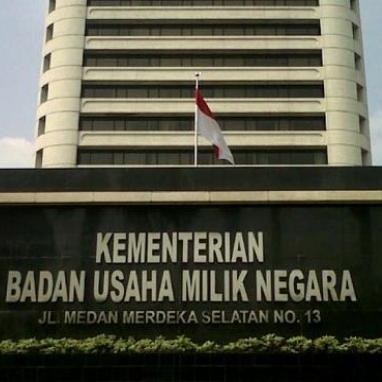By Cat Yong
In Indonesia, the ministry of state-owned enterprises (SOEs); the ‘Kementerian Badan Usaha Milik Negara’ or BUMN; oversees Indonesia’s business entities that have all or most of its capital owned by the state. SOEs could also be non-profit companies that aim to provide goods or services to the public.
Even though these enterprises are not profit-oriented or have bottom lines to think about and drive them towards business goals, BUMN’s Head of Information Systems, Imam Bustomi opined that they aim to grow and become leaders in their respective fields, be it locally, regionally or even at international level.
Imam who is also chairman of SOE’s Information Technology Forums said, “The purpose is stated in their vision, mission and strategic goals. And to support the business strategy, the role of IT becomes very necessary in order to improve the capability of the company to contribute to the creation of added value, excellent service and efficiency of the company’s operations.”
In that respect, every SOE is an entity that still needs to operate like a business.
Imam also said that IT should be developed in a focused and measurable manner so that SOEs are in line with long -, medium- and short-term business strategies.
“IT must be aligned with business needs as IT can enable the business to accelerate transformation,” he explained.
Two examples of SOEs in Indonesia are the state-owned bank, PT Bank Rakyat Indonesia (BRI), and national railway service, PT KAI (Kereta Api Indonesia). With support from IT, PT BRI and PT KAI were able to achieve business transformation, according to Imam.
PT Bank Rakyat Indonesia
For example, in 2009, Bank BRI was able to make all 6,341 of its branches, go online.
“At the same time, BRI accelerated development of its IT in support of business improvement and service enhancements that span the whole of Indonesia.
“It has been proven IT that BRI established, had improved quality of management and business performance of the bank.”
As a result, BRI’s progress received recognition from the public. Currently, BRI is the largest state-owned bank in Indonesia, both in terms of earnings and income.
More importantly, it managed to drop its label of being a village bank, and also has received various awards, one such being the One of Top Model Micro Finance World.
PT Kereta Api Indonesia
For a long time, PT KAI had been plagued with corruption scandals and earned also the reputation of bad service quality. With a majority of Indonesians using public transport, they were hard pressed for other alternatives.
All that changed when a new CEO, Ignatius Jonan came onboard in 2009. Ignatius committed that PT KAI would focus on providing better customer service and meeting stakeholder expectations, and since then, IT played a big role to helping Indonesia’s national railway service to achieving those goals.
Imam said, “Therefore, implementation and optimisation of IT was part of the process of PT KAI’s transformation, to achieve its business objectives, namely excellent service.
“IT alignment with the business is essential in ensuring IT projects and priorities are determined based entirely in reference to the business strategy and business needs.”
That said, Imam also cautioned that strategies for IT need to be flexible enough to allow and follow the possible changes and transformations that may occur in the organisation in the future.
As a result, PT KAI overcame its liquidity problems and is now profitable. Its customers now can also obtain train tickets anywhere and with ease, be it via online or third party channels at stations.
‘This is a good example of a SOE that turned around from being dirty, abandoned and exploiting subsidies, to being clean, modern, profitable and offering a service that is useful, convenient and comfortable to Indonesians.”
“IT can facilitate change towards doing things the better way. IT can accelerate the process of transformation of the company’s business. But, IT cannot create changes by itself. It needs a leader like a CEO who is committed and has a strong vision of the future, as a key success factor.
“This leader will ensure that the governance of IT investments is in line with the company’s vision, mission and generates added value for the whole business,” Imam explained.








